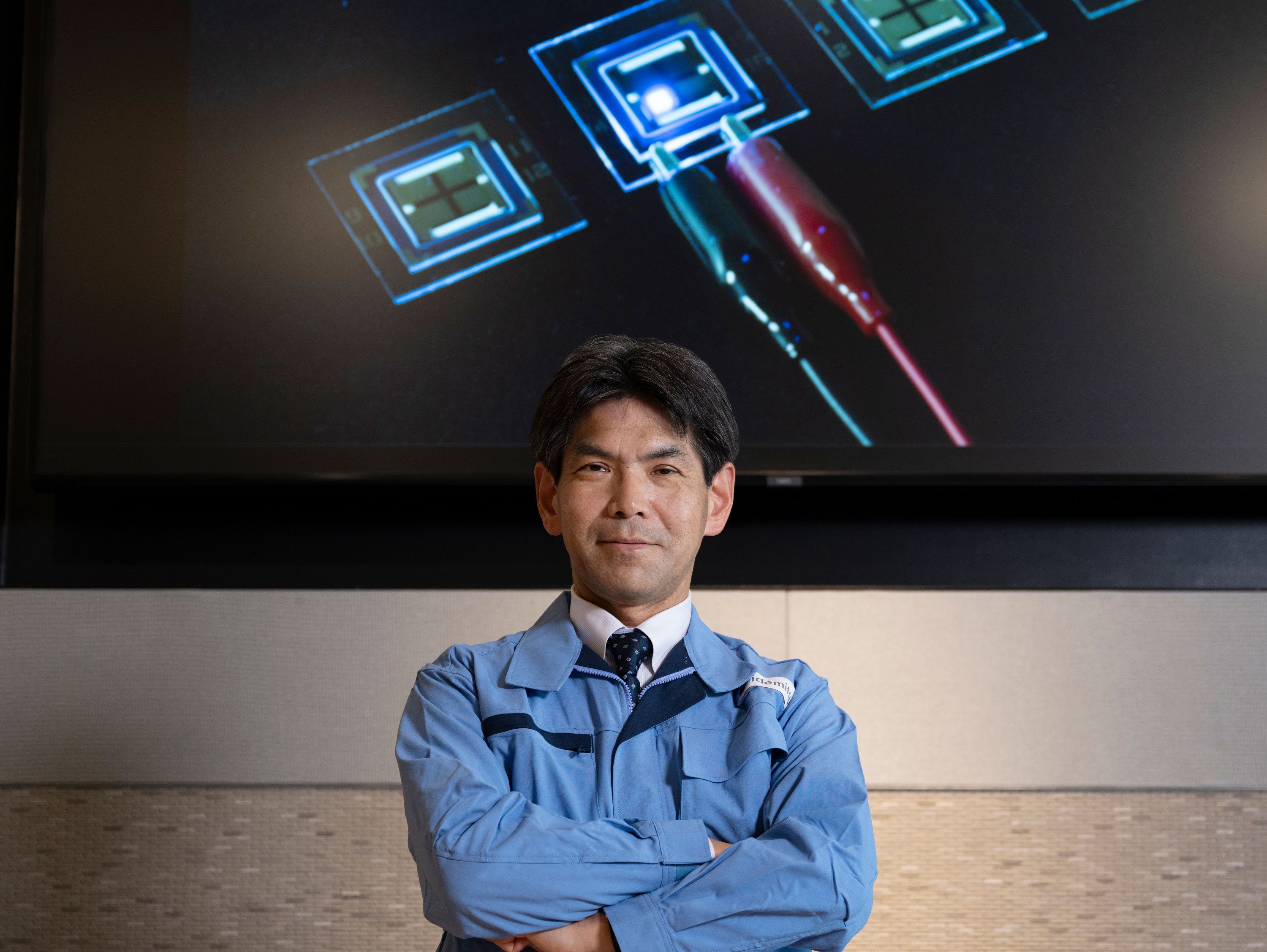
有機ELの世界に
活路を見出した
先達の意思を継いで
未来を切り拓く。
-
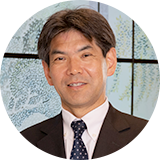 Advanced Materials Company Electronic Materials DepartmentM. FUNAHASHI
Advanced Materials Company Electronic Materials DepartmentM. FUNAHASHI
Idemitsu Kosan began research and development of OLED in 1985, and succeeded in developing OLED materials with world-class practical performance that emits blue light in 1997. The company's blue color is now known as "Idemitsu Blue" and is highly regarded both in Japan and overseas.
We interviewed an electronic materials developer who works in Electronic Materials Department developing OLED materials and has made great efforts to improve the performance of blue OLED, thereby creating a new market.
Joined the company in 1993. Majored in organic synthetic chemistry at university and graduate school. After joining the company, he was assigned to the optoelectronic materials group at the Central Research Institute, where he was responsible for the development of ferroelectric liquid crystal materials. From 1997, he was in charge of developing blue OLED materials, while at the same time working on the production of full-color OLED TVs for exhibitions. After that, he confirmed the performance improvement of the materials used for blue OLED and OLED element using them, and in 2002, he applied for a patent for OLED element and organic light-emitting media. In 2009, he received the Achievement Award from Japan OLED Forum. In 2018, he received National Commendation for Invention Program along with Masahide Matsuura and Kenichi Fukuoka. He will be awarded the Purple Ribbon Medal in the Spring 2024 Honors.
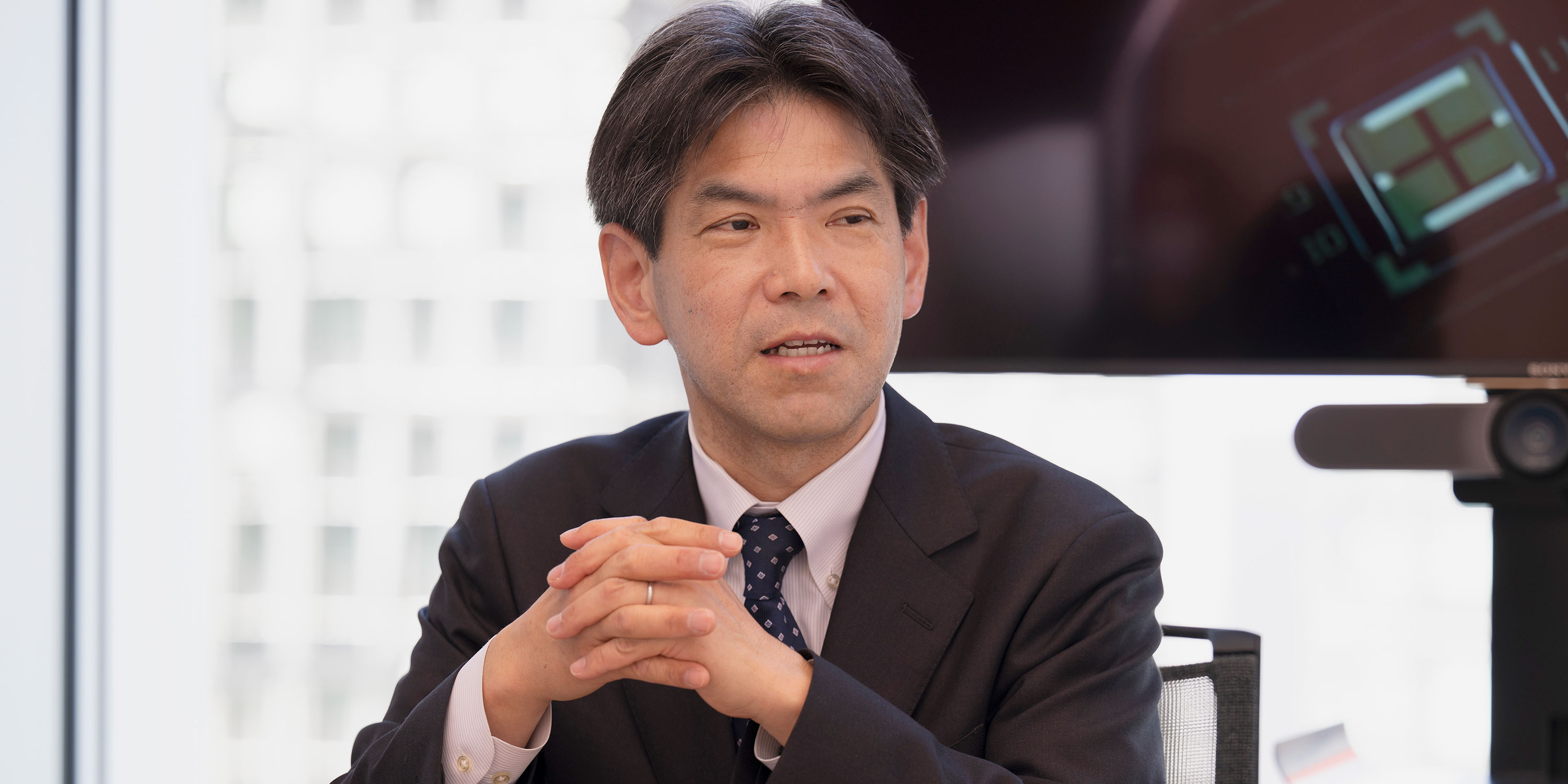
有機合成という
専門分野を生かして
電子材料の開発で
実績を上げてきた。
After years of research and development, he was finally awarded the honor of the medal.
In the spring of 2024, Funahashi received the Medal with Purple Ribbon for his "development of a highly efficient, long-life blue OLED light-emitting device." The Medal with Purple Ribbon is awarded to individuals who have made significant achievements in invention, improvement, and creation in the fields of science and art.
"In 2018, I was awarded the National Commendation for Invention Program along with Matsuura and Fukuoka for inventing the blue OLED element. Now, I have been honored with the Purple Ribbon Medal. This is not something I achieved alone, but with the cooperation of many people. I feel truly honored and grateful."
For nearly 30 years since he was put in charge of OLED in his fourth year at the company, he has been working solely on OLED development. However, the road to developing a business that could become a new pillar of the wholesale oil company and achieving results was not an easy one.
OLED
The start of tough days where business results are required
"When the Japanese economy was still in the period of high growth, our company was looking into the next several decades and exploring new businesses other than petroleum, and we were considering various themes at our research laboratory. Among those, electronic materials were selected as one of the themes related to petroleum, which is an organic compound."
Idemitsu Kosan began developing OLED materials in 1985. At the time, experts in the fields of physics and chemistry gathered at the research institute, which was similar to Liangshanbo. However, the situation changed dramatically with the times.
"When I joined the company in 1993, we were just hearing the footsteps of the bubble bursting. The various themes at the Central Research Laboratory where I was assigned were also on the verge of being reorganized. As the company's financial situation worsened and anxiety grew, all of the development team members were gathered together for regular training camps. The main theme of the training was 'How do we make a profit?' We received a lot of harsh criticism from executives promoting the electronic materials field, and I remember it being mentally tough."
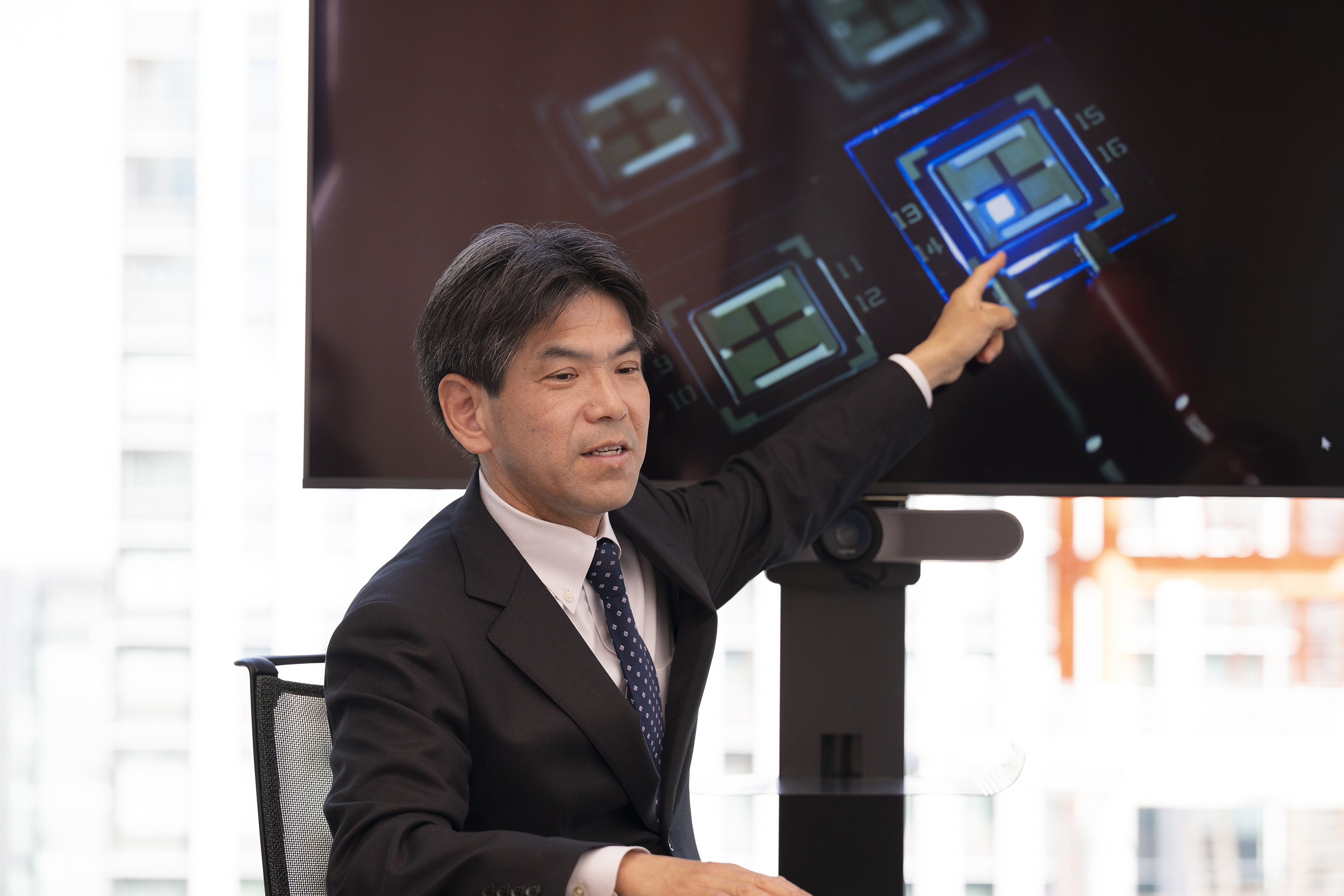
有機ELテレビを
世界に先駆けて
実現したことが
起死回生の一手に。
Overcoming obstacles through teamwork and gaining worldwide recognition
A turning point came in 1997, when his research theme changed from liquid crystal material development to OLED. His work involved developing blue-emitting materials and producing full-color OLED televisions for exhibitions.
"Immediately after my duties were changed in April, we began making full-color OLED TVs. I was in charge of making the circuit boards, and although it was all new to me, using clean rooms and photolithography equipment, I managed to get the job done thanks to the guidance of my senior colleagues. From making OLED element to mounting the circuits, we all encouraged each other as we made the panels, working late into the night every day."
The exhibition in which they were exhibiting was held in Tokyo in July, but the full-color OLED TV was completed only a few days before.
At the venue, a 5-inch OLED display was exhibited behind a black curtain. A long line formed as people wanted to get a glimpse of it. The brochures they had prepared ran out, and they had to make extra copies at short notice, giving a real sense of the magnitude of the response.
"The fact that the world's first full-color OLED television was made not by an electronics manufacturer, but by an oil company, caused quite a stir. At a time when OLED was almost unknown to the public, this was a leap forward that demonstrated the potential of television."
After successfully announcing the full-color OLED television, the company next turned to its main business of developing blue-emitting materials.
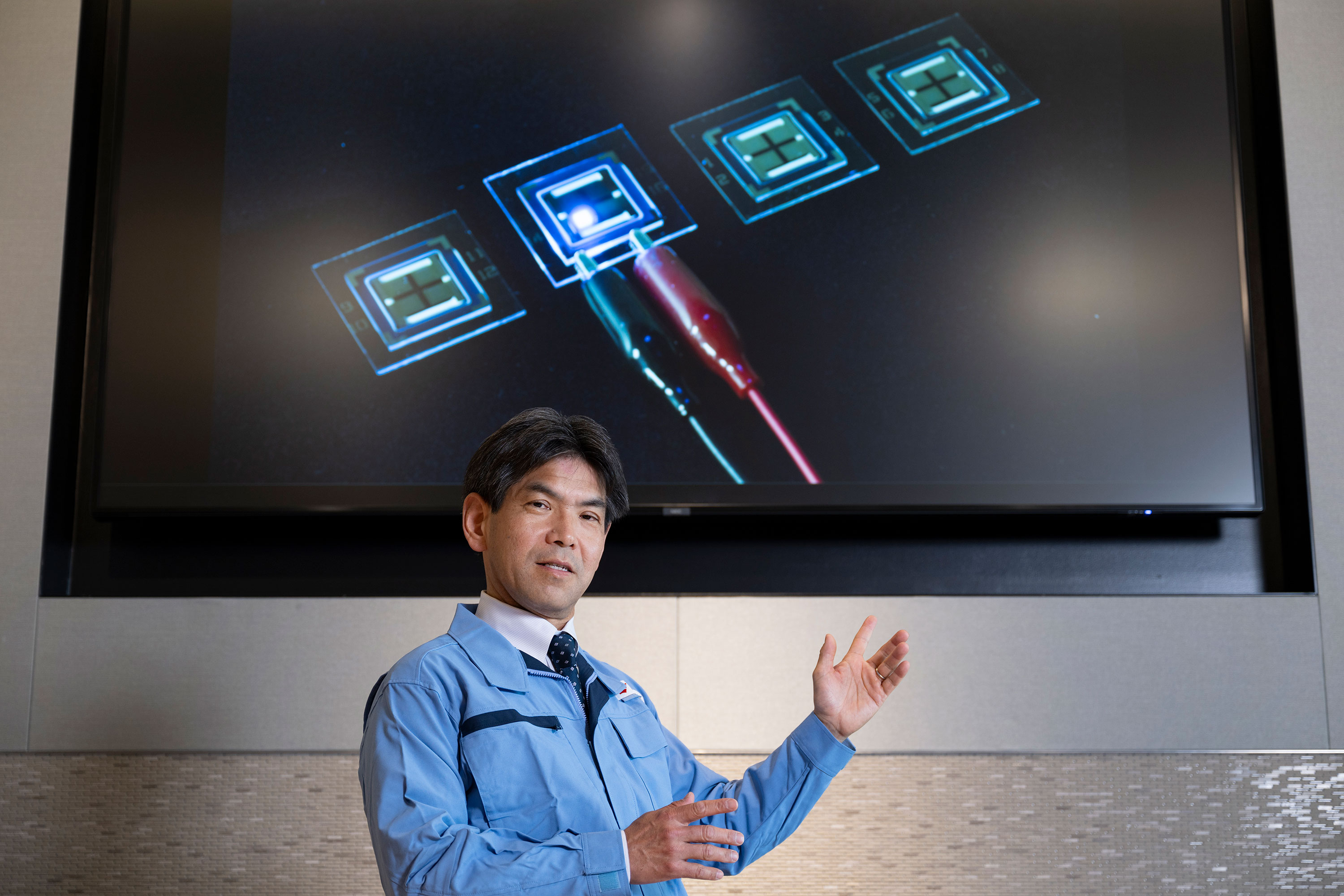
本物の青色を
ひたすら追求し続け
試行錯誤ののちに
手にした喜び。
Days of trial and error to complete the blue color
"Although we were able to create a full-color OLED TV, improving the efficiency and performance of blue light remained a challenge."
A color display is composed of the three primary colors red, green, and blue, but at the time there was no research group that had succeeded in developing an organic blue material.
"The reason why blue is difficult is that it requires higher energy to emit light than red or green, and until now there had been no organic material that could continue to emit light for long periods of time."
The blue color created by Idemitsu Kosan received a certain amount of acclaim, but it was still more "light blue" than "blue" and lacked saturation.
"Since the light emitted by only one material does not last long, we use two materials to create the blue color. In order to examine the combinations, we prepared more than 100 types of materials and repeated trial and error. Gradually, we began to obtain the results we had hypothesized."
After much trial and error, it took about five years to derive the basic concept of the combination of materials to be used in blue OLED and to confirm the improvement in performance, leading to the filing of a patent application in 2002.
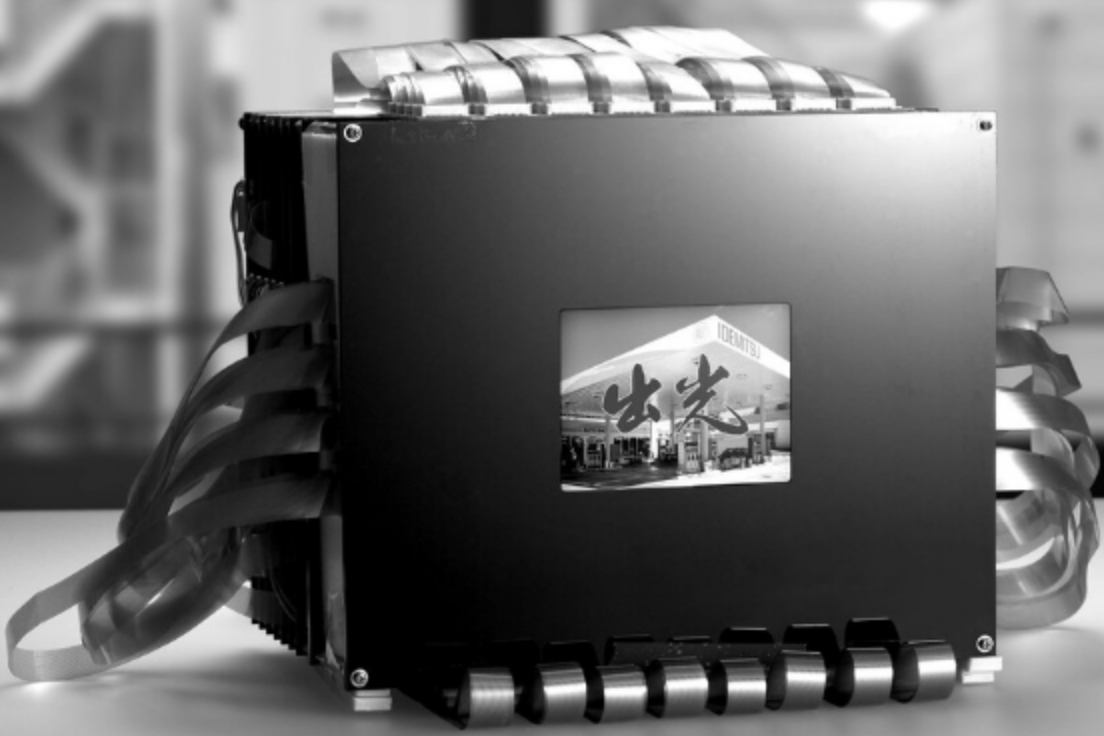
Blue organic material finally put to practical use, OLED TVs to go on sale
"Having created the basic concept for blue OLED, I felt a sense of accomplishment that we could now meet the needs of our clients. We continued to develop new blue materials to improve performance, and had already taken them to electronics manufacturers for evaluation, but finally we were confident that 'this will work.'"
In 2007, a domestic manufacturer released the world's first 11-inch OLED TV, using Idemitsu Kosan's blue OLED materials.
"I was really happy when a product using a material I developed was released into the world. Electronic materials and pharmaceuticals are effective with one material, but it is one that survives through tremendous magnification. It is the chosen one. Therefore, I thought it would be a source of pride for my family to have it adopted in a product, and I even took my son to an exhibition."
Furthermore, in the 2010s, overseas manufacturers began developing large OLED TVs, and 55-inch OLED TV was released in 2013.
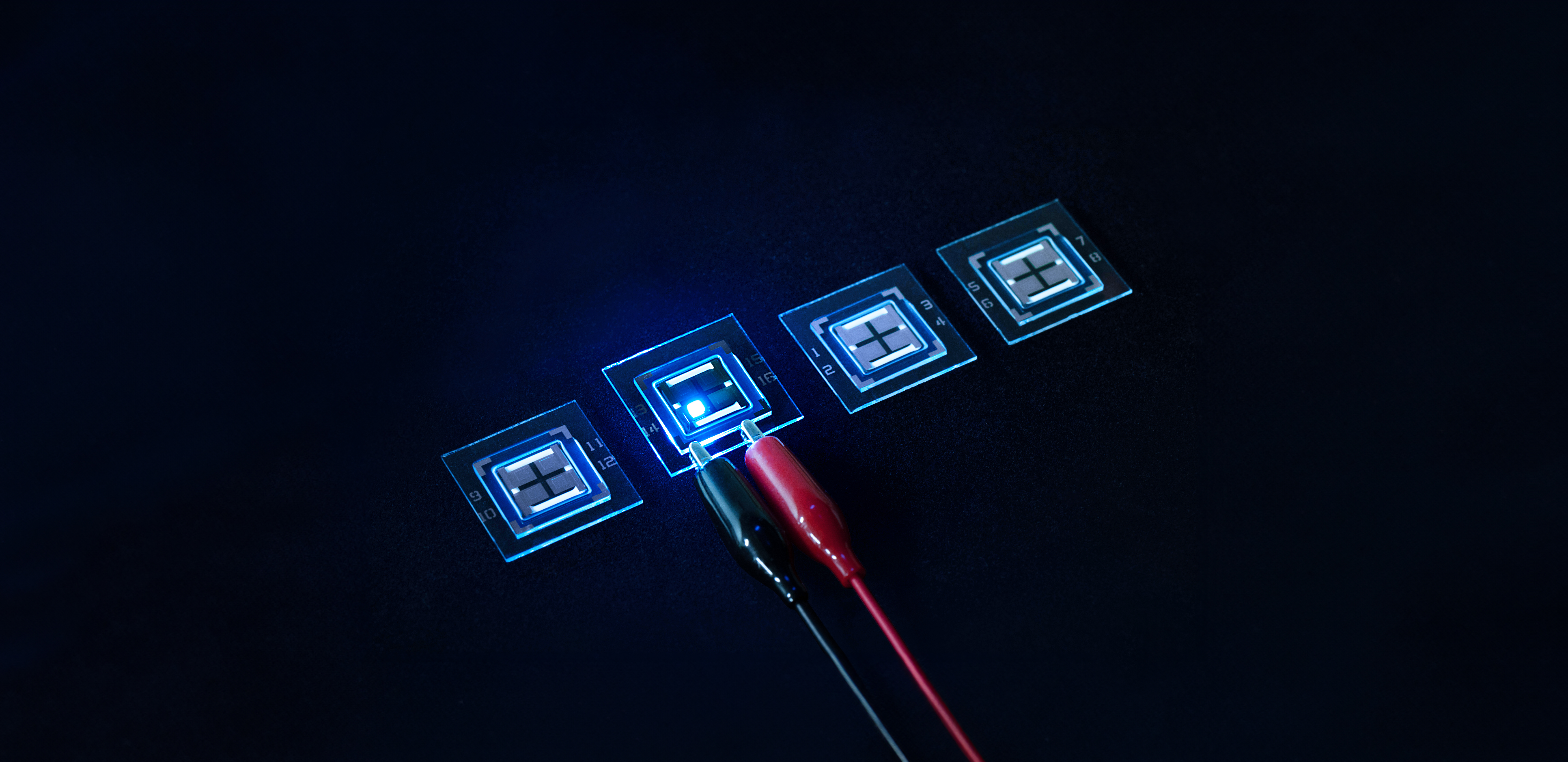
グローバルに展開する
青色有機EL材料
「Idemitsuブルー」が
描き出す未来とは。
The future of OLED and opening up a new future together with the next generation
The blue OLED materials invented by Idemitsu Kosan has dramatically improved the reproducibility of displays and is now recognized around the world as "Idemitsu blue. By the way, what other uses can OLED be expected in the future besides TVs?
OLED I think there are many other possible uses for besides display devices such as TVs, smartphones, and tablets. Signage and neon lights that take advantage of the panel's bendable feature will increase. In addition, in-vehicle devices such as car panels are also being considered, but durability is a major issue. Compared to smartphones and other devices, products are required to have a longer lifespan, and since safety is also a factor, higher efficiency and longer life are needed even more than before.
In 2023, Idemitsu Kosan will establish an advanced materials company in South Korea, aiming to accelerate R&D and strengthen the marketing system.
The new company's R&D department will be staffed by young Koreans. I hope that they will not only pass on our company's style, but also pioneer the local way of doing things by utilizing their knowledge. And I myself would like to contribute and be involved in that."
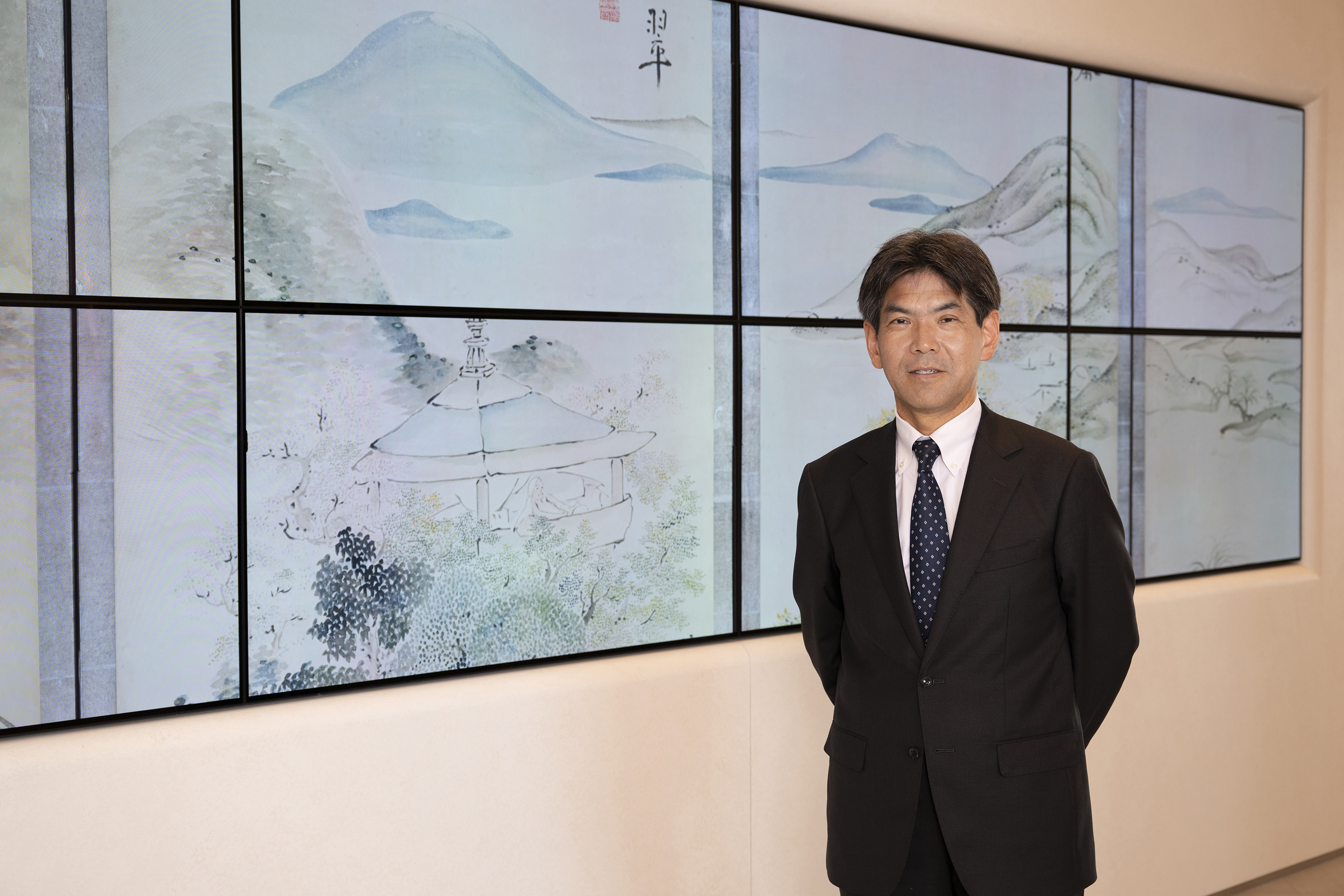
Now, about 30 years have passed since the dawn of OLED.
How has the way researchers work changed?
Back when he was going through repeated trial and error to develop blue OLED materials, he said, "I would research the literature, look at the data, formulate a hypothesis and then proceed with verification. At the time, there were few people, so we couldn't divide up the work, and I worked day and night." When he couldn't get results, he would return to his dormitory near the research lab and refresh his mind by talking with his colleagues about things other than work. "Nowadays, people with a variety of careers form teams and use their individual knowledge to advance development. Computational chemistry has advanced, and materials and element design has become more sophisticated, so the speed of development has become much faster than before."
Related interviews
-

百年以上もの歴史で
培われてきた
潤滑油の技術と心を
次世代へつなげる。2024.03.21 UPLubricants Department 2 Kanto Lubricants Section 2M.YAMADA -

石油製品を毎日
安定供給することで
人々の暮らしを守る。2024.03.21 UPChiba Complex Refinery Section 1M.YOSHIHARA -
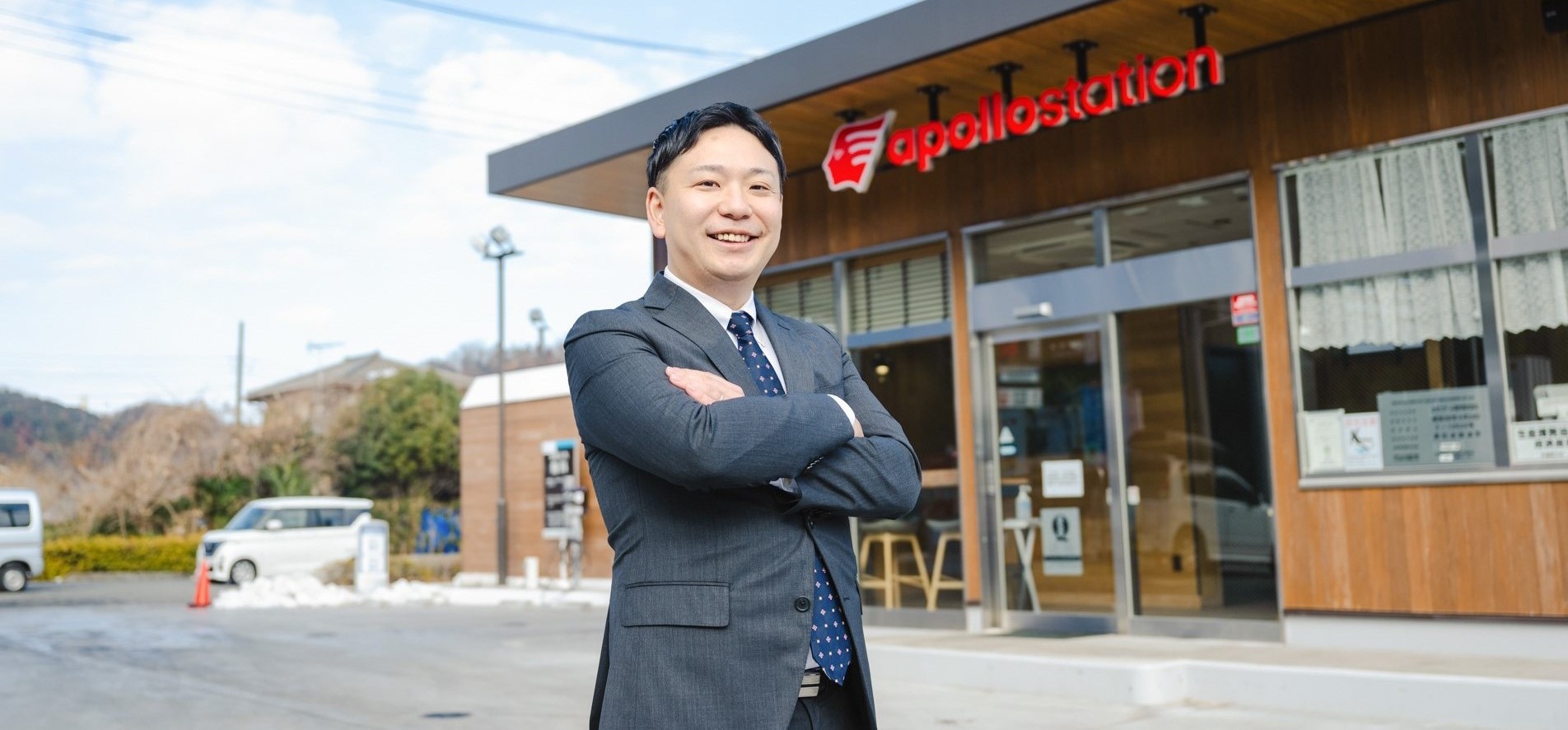
概念を超えた
サービスステーションの
実現によって新しい
時代を切り拓く。2024.03.21 UPPetroleum Marketing Department Gas Station Construction & Development SectionT.USUI

